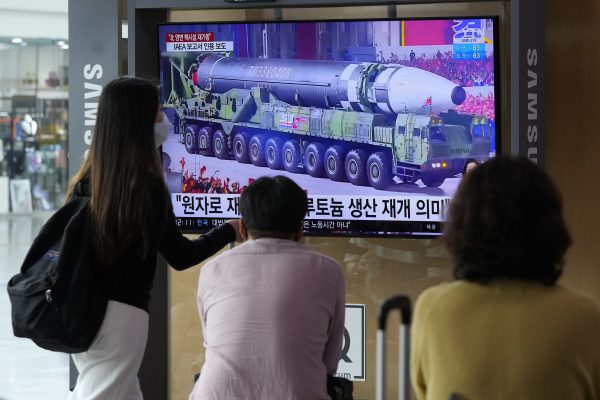
North Korea’s broadcasting of national military parades is about more than just flaunting its evasion of U.S. and U.N. sanctions aimed at stifling the development of its nuclear weapons program. While analyses of the sociopolitical implications of these parades often cite the correlation between nuclear power and the survival of the Kim regime, the ostentatious display of lethal weapons in massive military parades serves both a political and financial purpose: to demonstrate military might to enemies and entice potential buyers overseas.
Given the highly sensitive nature of its nuclear program, Pyongyang may refrain from strutting its most novel lethal weapons technology on a televised stage, but it does not shy away from dropping hints at its progress. For example, North Korea showcased a massive intercontinental ballistic missile and a new submarine-launched ballistic missile during a national military parade in Pyongyang days before U.S. President Joe Biden’s inauguration in January 2021.
While most concerns around Pyongyang developing lethal weapons center on a potential armed conflict between North Korea and the United States or South Korea, less discussion is spent on whether Pyongyang is selling these weapons to other rogue states or violent extremist groups already engaged in armed conflict with the United States and its allies abroad. North Korea has a well-documented track record of providing weapons technology to U.S. adversaries such as Iran and Syria. In 2020, the U.S. Department of the Treasury released a statement highlighting concerns regarding joint long-range missile development projects between Pyongyang and Tehran, which the United Nations later echoed in its March 2021 Panel of Experts report on North Korea. The U.N. report also mentioned its ongoing investigation following claims of North Korea offering arms deals and military training programs to the Democratic Republic of the Congo, Eritrea, Iran, Venezuela, Yemen, and other countries. Another manifestation of this threat to international security was North Korea providing Syria with the technology, resources, and manpower to develop a nuclear reactor in 2007, as well as allegedly providing the Assad regime with necessary materials to create chemical weapons.
Although not as well-defined as its relationship with Iran or Syria, Pyongyang may see financial value in selling weapons to terrorist groups as it continues to pursue unconventional ways to skirt the impacts of economic sanctions. North Korea hasn’t yet issued any public statements regarding the Taliban’s recent seizure of the Afghan government and bad blood between Pyongyang and radical Islamic terrorist groups like Boko Haram may prevent any immediate overtures of military support. However, the combination of a self-imposed national blockade due to COVID-19 along with unyielding economic sanctions and widespread agricultural damage from severe flooding could push Pyongyang to pursue secret arms deals with other pariah states and extremist groups for financial gain.
As Pyongyang will likely continue to publicly broadcast its national military parades, North Korea watchers, national security advisers, and military experts should pay close attention to these events to identify similarities between the showcased weapons and growing military capabilities of hostile countries and extremist groups abroad. For example, drawing comparisons in size and technology between North Korea’s Yongbyon reactor and Syria’s nuclear reactor in 2007 was key in attributing assistance to Pyongyang. Two specific dates to remember for future military parades would be Party Foundation Day on October 10 and the 110th birthday of Eternal Leader Kim Il Sung on April 15, 2022. According to unidentified sources inside the country, North Korea has already begun preparations for the latter to “show the entire world the accomplishments of the Supreme Leader,” which will likely feature lethal weapons technology of interest to U.S. adversaries and foreign extremist groups.

0 Comments